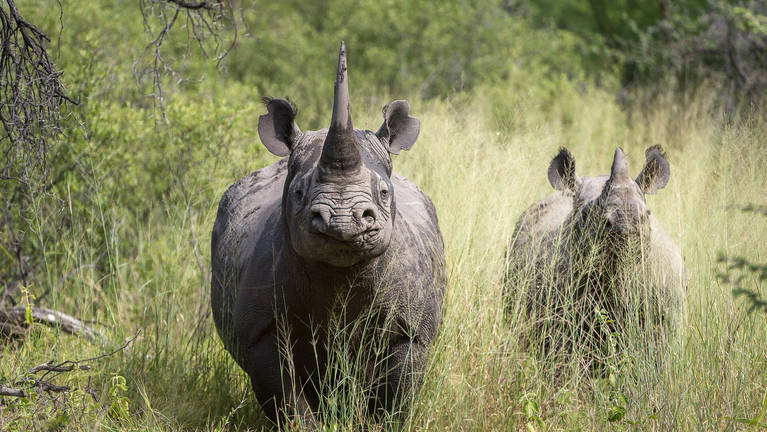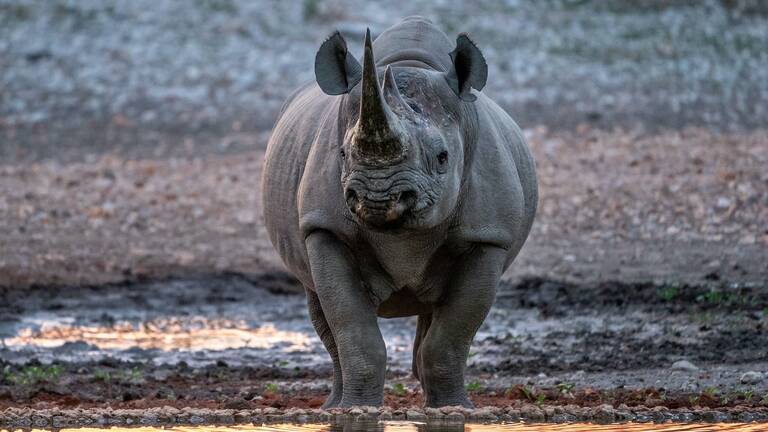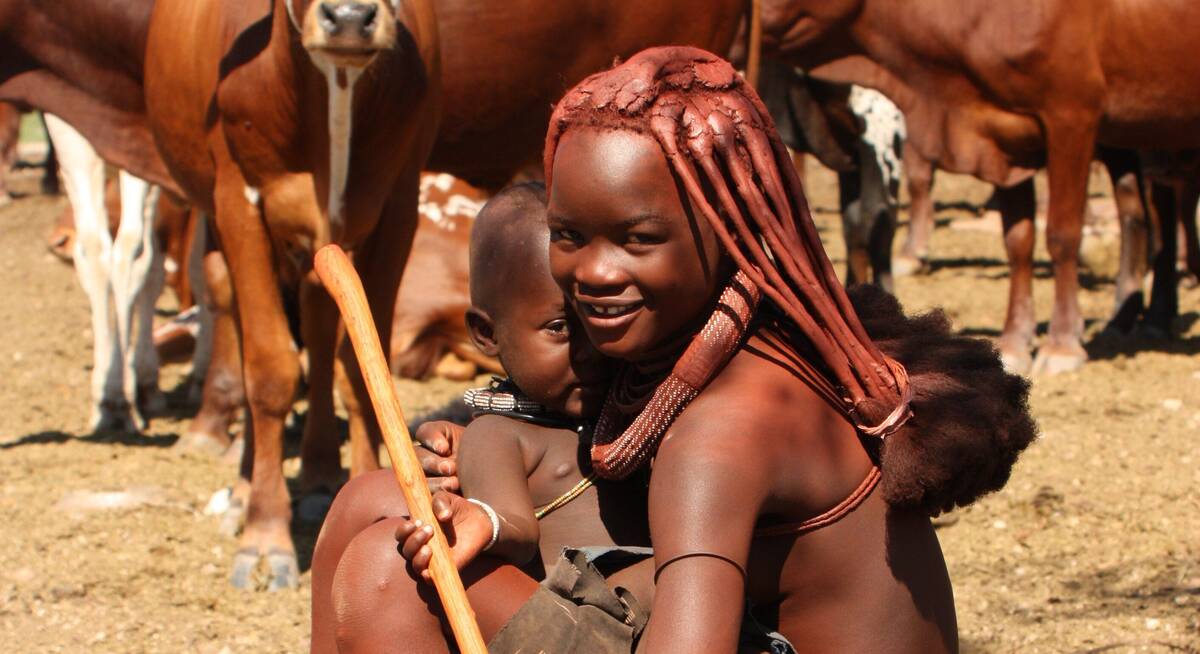Black Rhino in Africa
The black rhino is the smaller and rarer of Africa’s two rhino species but has the more fearsome reputation. Shy and heavily persecuted, it tends to stick to cover.

Quick facts about Black Rhino
| Scientific name: | Diceros bicornis | Habitat: | Scrub & open woodland |
|---|---|---|---|
| IUCN status: | Critically Endangered | Adult weight: | 800–1,400kg |
The black rhino is an imposing animal, with its tank-like body and two lethal horns. Nonetheless, it is smaller and more agile-looking than the white rhino, which may weigh twice as much. In colour, this species is no more ‘black’ than its cousin is ‘white’.
Unlike the grass-grazing white rhino, however, it is a browser, using its distinctive hooked lip to pluck woody vegetation. It also differs in profile, with a smaller head, held higher, and a more concave back.
Black rhinos are generally seen alone or in small groups. They are most active at dawn and dusk, retreating to a wallow during the heat of the day. The single calf stays close to its mother.
±5,500
Current population
1.3 m
Record horn length
50 km/h
Max. speed
16 months
Gestation period
Africa's top camps for seeing black rhinos
Based on 756 reports by our travellers since May 2018, the camps below have the best chances of sighting black rhinos. Simply follow the key below.
Best chances to see
Good chances to see
Some sightings
No sightings yet
Where to see black rhinos in Africa
Black rhinos occur in only a handful of protected areas in east and southern Africa. Your best chance of spotting one is at a waterhole or on foot with a tracker.
Top tips for viewing black rhino
A century ago, black rhinos were common across much of sub-Saharan Africa. Hunting and persecution for the lucrative rhino horn market has since seen them disappear from much of their former range, and the few remaining populations are heavily protected.
Top spots today include the Laikipia Plateau (Kenya), Ngorongoro Crater (Tanzania), KwaZulu-Natal (South Africa) and Namibia’s Etosha and Damaraland.
Old hunters’ stories have saddled this species with a reputation for aggression. In reality, it is a shy animal that prefers to retreat – although you should never be complacent, especially when on foot. Black rhinos generally stay in cover and emerge at dusk. Staking out waterholes can be productive, especially after dark, as can a guided walk, when experienced trackers quickly find the animal’s three-toed prints.

Holiday ideas to see black rhinos
Based on our travellers experiences, these are the holidays which will give you the best chances of good black rhino sightings

Our top destinations for black rhinos
Click below for detailed information about black rhinos in these countries, including our latest sightings data from the camps and lodges there.



















